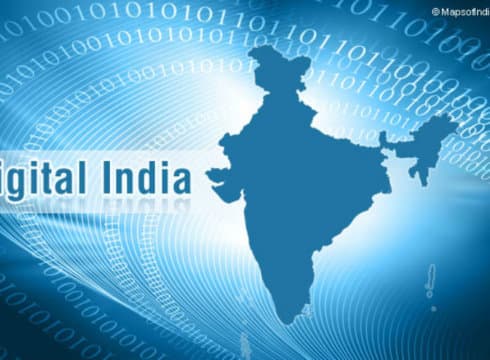Inc42 Daily Brief
Stay Ahead With Daily News & Analysis on India’s Tech & Startup Economy
The Digital India Week (DIW) that kick-started this month is sure to revolutionize the way India communicates. The campaign received eminent industry leader’s support along with their committed investments. This campaign spearheaded by the Indian Prime Minister, Narendra Modi, will potentially create 1.8 million jobs apart from connecting India through a broadband highway. This drive will open many doors and is going to be a boon.
So what effect will it have on the Indian digital space?
2, 50,000 gram panchayats and 600 districts of India will be connected through this particular initiative; hence the audiences for digital media will only go up tremendously. For example, eSignatures, which is now commanding a huge market has found a place under the government initiative and, people can now easily sign a document online using Aadhaar authentication through the eSign framework. Similarly, the digital locker will help people store their important documents online without worrying about physical documents, not to mention, save paper!
But, this is not where the buck stops! These are surface-level benefits for the common people. Can you imagine the impact that a person, brand or product can create with such a wide reach and how much it can benefit? A revolution is surely waiting! By using the different digital channels especially the social media channels, brands can even double their numbers. When it comes to small and medium scale industries, and even artisans located in remote areas, the benefits of digitization will be much greater. They can enlist their businesses on the web and reach out to people not only in urban areas living in different cities but also different countries.
So how do they go about with? We need to launch drives through which basics of digitization can be taught to people residing in small town and villages. Thousands of small businesses that are grappling to survive and reach larger audience should get online first. They need to create online identities that will help their businesses reach consumers in large cities.
One of the key initiatives of the DIW is Electronics Development Fund (EDF), which will promote innovation, research and product development to create a resource pool within the country as also a self-sustaining eco-system of venture funds. The start-ups are going to benefit immensely from this as aspiring entrepreneurs are going to get an extra push with this directive. While many big corporate’s like Tata and Infosys are coming forward to fund and encourage start-ups and there is nothing like government funding and backing, and the time is ripe enough for that.
Raising the question of IT progress in villages, while the thought behind digital week to promote key projects around e-governance, e-hospitals, e-basta etc is great, we all are missing one key factor in all these things – the penetration and adoption of internet is only limited to metros and towns. With a low literacy rate where people still are adapting to basic aspects of mobility, such great initiatives will bear fruit when the Desh goes Digital in true sense. Better late than never is what we can say!
Digitization of urban India took place a while back but no one was really pushing hard enough to get the rural areas digitized as well. DIW has finally arrived to complete this missing piece of the puzzle. While visiting India last year, Facebook founder, Mark Zuckerberg had said about connecting rural people in India to the Internet, “There are a billion people in India who need to be connected. Local language-based content will be a big focus area for us here.” The reach of local language based content will be huge once the rural areas in India get on the broadband highway. The different channels for digital marketing like: a. Email b. Search engine optimization (SEO) c. Social media marketing includes: Facebook, Twitter, LinkedIn and Pinterest d. Content marketing and e. PR on digital media marketing, will assume new heights when utilized in local content.
We have come a long way from the traditional forms of communication and are at an age when at the click of a mouse, information can be shared with the world. For example, we no longer write letters to anyone, instead we email or for shorter, faster and regular form of communication the social media is even more effective. Indian villages have arrived late to the party while the world has progressed quite a bit.
While many other countries progressed quite a bit on the digitization front, what kept us lagging behind?
At an age when digital media is ruling the world, India is still trying to get its rural population connected. Though things will now change with the initiated of the tech savvy PM who seems to have understood the importance of the digital space. This initiative aims at empowering people through IT but can deliver more if utilized to its maximum potential.
The way forward can be to get the rural population up-to-date with digitization. Modules for Internet and digital education for the commoners should be a must and camps should be organized to educate people on how to leverage digital assets. This should be followed by the 2500 hotspots that BSNL promises. Smart initiatives are a need for a country like India. But too much too soon can be a spoiler, let’s educate to enable Digital India in its truest sense.
{{#name}}{{name}}{{/name}}{{^name}}-{{/name}}
{{#description}}{{description}}...{{/description}}{{^description}}-{{/description}}
Note: We at Inc42 take our ethics very seriously. More information about it can be found here.


